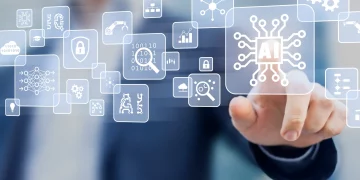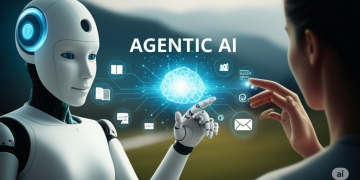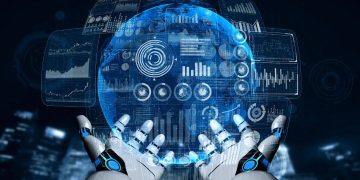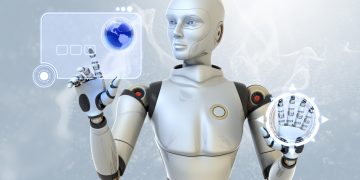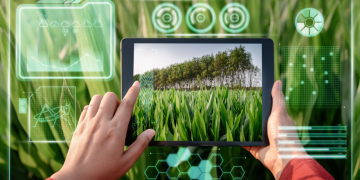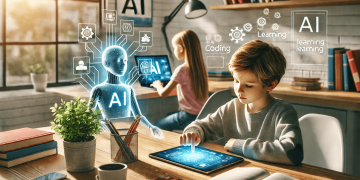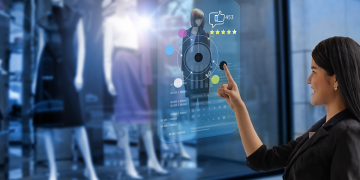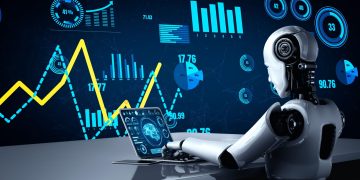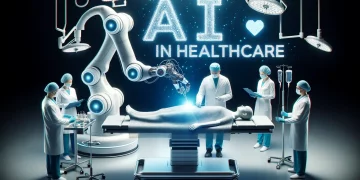Introduction
The restaurant industry has undergone significant changes over the past few years, with technology becoming a driving force in improving efficiency, profitability, and customer satisfaction. Among the most transformative technologies today, artificial intelligence (AI) is leading the way by reshaping traditional practices in areas such as supply chain management and customer experience. By leveraging AI tools, restaurant owners and managers can streamline their operations, reduce waste, optimize their supply chains, and deliver a more personalized, efficient dining experience for their customers.
AI applications in the restaurant sector are diverse, ranging from predictive analytics for inventory management to chatbots and recommendation engines that enhance customer interaction. In an increasingly competitive market, AI offers the potential to create a more efficient and responsive operation, ultimately improving both the customer experience and the bottom line.
This article will explore how AI is revolutionizing the restaurant industry, focusing on the impact it has on supply chain management and customer experience. We will explore real-world examples of AI implementations, the benefits of using AI technologies, and the challenges faced by restaurants as they adopt these innovative tools.
Section 1: The Role of AI in Supply Chain Management
1.1. Overview of AI in Supply Chain Management
Supply chain management (SCM) in the restaurant industry involves sourcing ingredients, managing inventory, ensuring timely deliveries, and minimizing food waste. In the past, these tasks were primarily handled through manual processes, leading to inefficiencies and errors. However, with AI, restaurants can now automate many aspects of the supply chain, enhancing both accuracy and efficiency.
AI tools leverage data to optimize inventory levels, predict demand, and recommend the best suppliers, reducing the risk of stockouts or overstocking, which can result in unnecessary waste. These systems also track shipments, manage supplier relationships, and even forecast trends in customer preferences, enabling restaurants to adjust their offerings accordingly.
1.1.1. Demand Forecasting with AI
One of the most valuable uses of AI in supply chain management is demand forecasting. AI models analyze historical sales data, seasonality, and even external factors like weather patterns, holidays, and events to predict demand for specific dishes or ingredients. This allows restaurants to order just the right amount of stock, minimizing food waste and improving cost efficiency.
For example, an AI-powered system could analyze a restaurant’s past sales data and adjust orders for ingredients based on projected customer demand. If a restaurant regularly sees higher sales of certain dishes on weekends, the AI system could help predict and order extra ingredients for the weekend rush, reducing the chance of running out of key ingredients or wasting food.
1.1.2. Optimizing Inventory Management
Inventory management is another area where AI can add value. With AI, restaurants can automate stock tracking, set reorder points, and even analyze trends to predict when stock is likely to run out. Some AI-powered tools can track ingredient shelf life, ensuring that older stock is used first and that perishables are used in time to prevent spoilage.
Additionally, AI-powered systems can suggest inventory adjustments based on changing customer preferences or external market conditions. This helps reduce waste and ensure that restaurants maintain optimal stock levels.
1.1.3. Supply Chain Transparency and Traceability
AI can enhance transparency and traceability in the supply chain by tracking every step of an ingredient’s journey, from farm to table. With blockchain and AI integration, restaurants can verify the quality, authenticity, and source of their ingredients, offering a level of transparency that resonates with customers who are increasingly concerned about the sustainability and ethical sourcing of their food.
For example, using AI to track the origins of ingredients, restaurants can guarantee that they are serving locally sourced or organic food. This is not only beneficial for sustainability but also helps improve a restaurant’s reputation, particularly among health-conscious and environmentally aware customers.
Section 2: AI in Enhancing Customer Experience
2.1. Personalized Dining Experience
AI plays a significant role in personalizing the dining experience for customers. By analyzing customer data, including preferences, past orders, and feedback, AI tools can provide highly tailored recommendations. This personalization enhances the overall experience, ensuring customers feel valued and heard.
2.1.1. AI-Powered Recommendation Engines
Restaurants are using AI-driven recommendation systems to suggest dishes to customers based on their preferences. For example, when a customer makes a reservation or browses a restaurant’s menu online, AI can analyze their previous dining history and suggest meals they are most likely to enjoy.
These recommendation engines can also adapt to customer feedback. If a customer orders a dish and rates it highly, the system can suggest similar items in the future. On the other hand, if a customer rates a dish poorly, the system can avoid recommending that dish again, offering more personalized dining options.
2.1.2. Tailored Promotions and Discounts
AI can help restaurants create personalized promotions and discounts based on customer behavior and preferences. By analyzing customer profiles, AI tools can suggest discounts for menu items that the customer often orders or provide special offers on birthdays and anniversaries.
This level of personalization increases customer loyalty and satisfaction, encouraging customers to return to the restaurant or engage with its delivery services. Furthermore, targeted promotions increase the likelihood of upselling and cross-selling, driving more sales and revenue.
2.2. AI-Driven Chatbots and Virtual Assistants
Incorporating AI chatbots into restaurant operations is an effective way to enhance customer service and streamline communication. AI-powered chatbots can engage with customers through websites, social media, and mobile apps, answering questions, taking reservations, and even assisting with orders.
2.2.1. Handling Reservations and Orders
AI chatbots can handle reservations by analyzing real-time availability and booking tables without human intervention. They can also take food orders directly from customers via text or voice, allowing restaurants to serve more customers with greater efficiency.
For example, when a customer messages a restaurant through its website, an AI chatbot can help them choose dishes, add items to their cart, and even suggest beverages or side dishes. The chatbot can also handle payment processing, providing a seamless and quick transaction.
2.2.2. Customer Support and Feedback Collection
AI chatbots can respond to customer inquiries instantly, providing information on the menu, special offers, or operating hours. In addition, after a customer has dined, chatbots can automatically reach out for feedback, providing valuable insights into the dining experience.
This immediate and continuous customer engagement can improve overall satisfaction and help restaurants resolve issues promptly, ensuring that no customer query goes unanswered.
2.3. AI for Optimizing Restaurant Operations
In addition to improving customer interaction, AI also contributes to the overall operational efficiency of a restaurant. AI tools can optimize staffing schedules, adjust menus in real-time based on ingredient availability, and even help manage food delivery systems.
2.3.1. Staff Scheduling and Management
AI can analyze historical data and predict peak hours, allowing restaurant managers to schedule the right number of staff at the right times. For instance, an AI system can recognize that a restaurant is busier on Friday evenings and adjust the number of servers and kitchen staff accordingly, ensuring that customers receive timely service during peak hours.
2.3.2. Dynamic Menu Pricing
AI can be used to adjust menu prices based on factors like ingredient costs, demand, or time of day. By continuously analyzing these variables, restaurants can ensure that they maintain a competitive pricing strategy while maximizing revenue.
For example, AI tools can automatically raise prices for dishes that are in high demand or reduce prices for less popular items to encourage more orders, helping to balance customer preferences with restaurant profitability.
Section 3: Case Studies of AI in the Restaurant Industry
3.1. Domino’s AI-Driven Pizza Ordering System
One of the leading examples of AI in the restaurant industry is Domino’s, which has implemented an AI-driven ordering system called “Domino’s AnyWare.” This system allows customers to order pizza using various platforms, including text, voice assistants, and smartwatches. By analyzing customer preferences, Domino’s provides personalized suggestions and makes ordering more efficient.
3.2. McDonald’s AI-Powered Drive-Thru
McDonald’s has implemented AI technology in its drive-thru ordering system. Using AI, the company can predict customer orders based on weather conditions, time of day, and previous customer orders. This reduces wait times and increases customer satisfaction.
3.3. Starbucks’ AI-Driven Personalization
Starbucks uses AI to personalize the customer experience through its mobile app. By analyzing purchase history, preferences, and geographic location, the Starbucks app provides personalized offers and recommends beverages that align with the customer’s tastes.
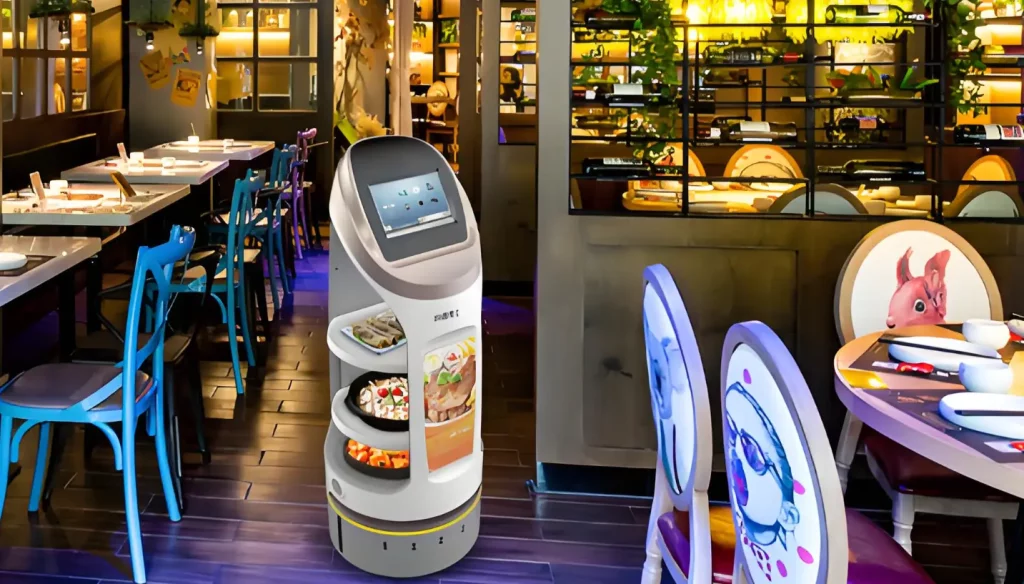
Section 4: Challenges and Ethical Considerations
4.1. Data Privacy Concerns
With AI relying heavily on customer data, the privacy and security of that data are major concerns. Restaurants must ensure that they comply with data protection regulations, such as GDPR, to protect customer information and maintain trust.
4.2. Costs of Implementation
Implementing AI tools can be costly, especially for smaller restaurants. The initial investment in AI technologies may be a barrier for many businesses, although the long-term benefits can often outweigh these costs.
4.3. Dependence on Technology
While AI offers numerous benefits, over-reliance on automation could lead to the loss of the human touch that many customers appreciate. It’s important to strike a balance between AI tools and personal service.
Conclusion
AI is revolutionizing the restaurant industry by improving both supply chain management and customer experience. With AI tools for demand forecasting, inventory management, and customer engagement, restaurants can reduce costs, increase efficiency, and provide more personalized, satisfying dining experiences. As AI continues to evolve, the opportunities for restaurants to innovate and enhance their operations are boundless. However, businesses must carefully address the challenges associated with implementing AI, particularly around data privacy, cost, and maintaining a balance between technology and human interaction.





